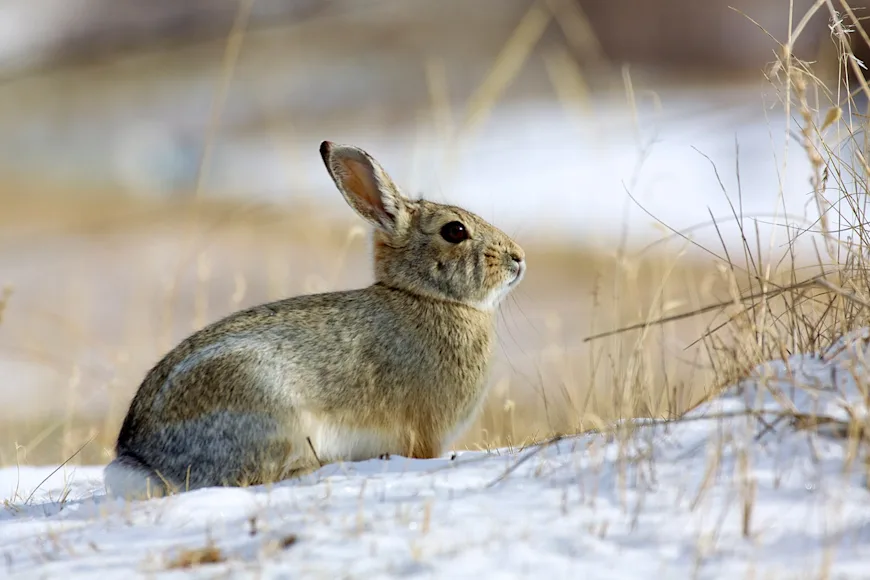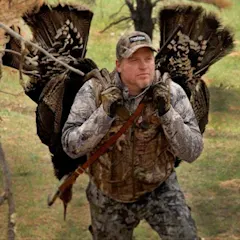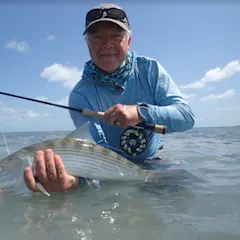If you don’t know how to hunt rabbits or you haven’t hunted them in a while and need a refresher, I envy you a little. Bunny hunting is always a good time, but getting started or restarted at chasing rabbits is usually full of surprises too. Surprise at how much action can be had from a handful of hedgerows or briar patches. Surprise a how available and easy it all is. And surprise, for sure, when a cottontail bolts from under your feet and the shooting starts—and, hit or miss, you realize how much fun you’ve been missing. So, let’s get started. Below is a complete guide to rabbit hunting, with or without a dog, including tactics, guns, gear, and everything else you need to know to start busting some bunnies.
Rabbit Hunting: Where to Find Rabbits
All you really need to know about finding rabbits and hares can be summed up in three words: Low. Brushy. Cover. If that means farm hedgerows choked with honeysuckle and wild grape or an old junkyard grown over in grass and briars, you’ll probably kick out a cottontail. If it means cedar shrubs in a boreal forest, you’ll likely see a snowshoe hare. Sagebrush and prairie grasses? Probably a jackrabbit. The bottom line is that any patch or thicket that’s dense enough to hide a rabbit from land-based predators and offers enough overhead cover to keep avian predators at bay is a good place to try to kick up a rabbit or hare.
Rabbit Hunting Without a Dog
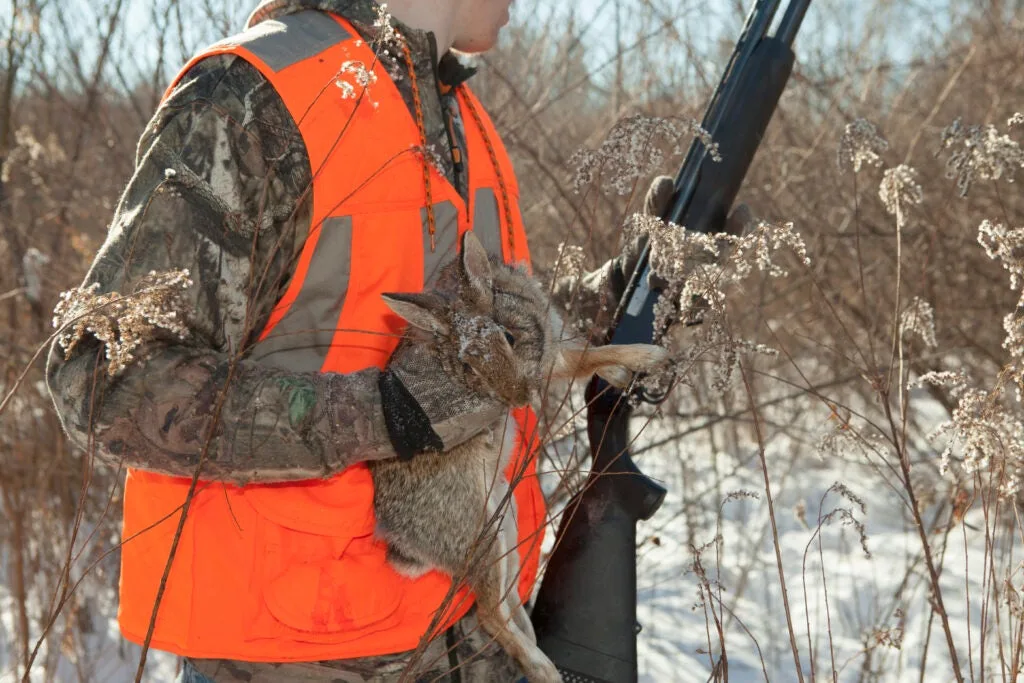
When you’re hunting rabbits without a dog, you have to be the dog. You need to stomp every brush pile and rattle every blowdown. Leave no briar patch untouched. That, or you have to slip around so stealthily that you see the rabbit before it sees you. Both methods are fun. You can stomp one day and sneak the next. But why not combine them and hunt all day? Here’s a dawn-to-dusk, step-by-step plan for how to hunt rabbits without a dog.
Step 1: Snipe rabbits at dawn.
At first light, take out a binocular and glass new timber cuts, patches of recently burned woods, or the edges of fields and food plots. Rabbits need high-quality forage all fall and through the winter, and saplings and twigs in regenerating areas and green growth in burns or plots will keep bunnies feeding for the first hour of daylight. Stalk any rabbits that have ventured into the open. It’s not a bad idea to pack a scoped .22 rifle in your vehicle, along with a shotgun. You can swap out firearms after the first-light sniper work.

Step 2: Work the edges after sunup.
Rabbits will retreat to nearby cover once the sun has been up for a bit. So grab a shotgun and work over every tangle of hedgerow brush and field-edge bramble, and stomp on every pile of timber slash. Rabbits will use these as safe havens, but you’ll have an open shot when you push them out of the thickets.
Step 3: Hit the high ground for loafing bunnies.
Next, move to dense cover where rabbits retreat to while away the midday hours. High ground along creeks and swamps are a good bet. Brambles and thickets flourish in the increased sunlight along waterways, giving rabbits good cover close to accessible drinking water. The going will be tough and briary, but rabbits dislodged from these hideaways are hemmed in by the water and have fewer options for escape. Post shooters upstream and downstream of the thickest cover on the creek, and send in whoever is wearing the toughest pants.
Any open, sunny hillsides with enough low grassy or brushy cover to hide a bunny are great bets now, too, as loafing rabbits will soak up the warm rays. If you’ve got a buddy, work across the hillside, one hunter high and one low. Bunnies bumped by the hunter above will usually bolt downhill to the hunter below.
Step 4: Hunt hunkered-down rabbits near home.
Old homesteads, barns, and equipment junkyards are often abandoned and ignored for years, and the dense cover along with hidey holes under rotting floors and rusting tractors can be bunny heaven. Don’t pass them up, especially if these covers are set in the middle of fields or pastures. Post up gunners 20 yards from the corners of barns and sheds, and send the beaters in. Rabbits will race along the edges of old houses and barns, then jet away from the ruckus into easy shotgun range.
Step 5: Stage mini-drives for woods bunnies.
Once you’ve worked fields, creeks, and brushy hillsides, hit the woods. Two hunters moving slowly about 30 yards apart is standard practice for jumping and shooting rabbits without a beagle pack, but there’s a better way. Have one hunter move quietly forward through the woods for 30 to 40 yards, then post up and stay still, gun at the ready. The other hunter then moves forward in a zigzag pattern while looping out to one side and then back to the stander, shaking brambles and stomping blowdowns to kick game forward to the other gunner. Repeat as necessary.
Step 6: Take a stand for last-light rabbits.
As the light fades in late afternoon, make your way back to a food plot, recent burn, or new cutover. Rabbits will start to move into these open areas to feed again, so it’s time again to glass and stalk as shooting light winds down. If you follow the plan above, you should end the day where you began—close to the truck where your rimfire awaits. And while you might have lost a pound or three in sweat and blood, a bunny-filled game bag should more than even the score.
Rabbit Hunting With Dogs
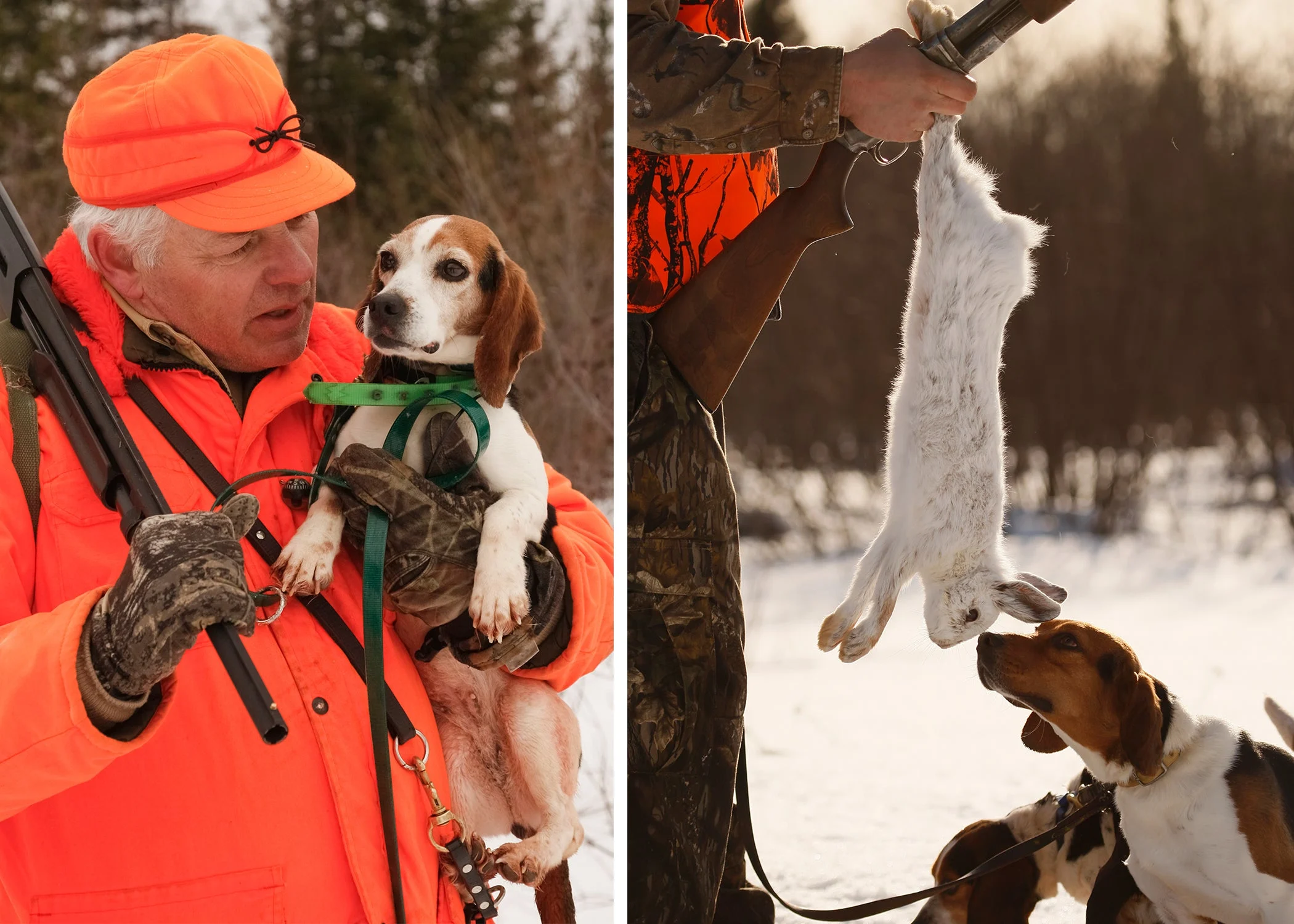
Hunting rabbits with dogs is very simple—if someone else owns the dogs. When that’s the case, you pretty much just wait for the dogs to run a rabbit past you and then you shoot it or, at least, at it. For the dog owners, though, running rabbits is a serious business that involves choosing good dogs—typically beagles and often a whole pack—training them, and hunting with them often enough to make it all worth it.
Running beagles for snowshoe hares was a big deal where I grew up, and to split the work of it, the members of some large farming families would raise and train a beagle or two each and then get together on the weekends to hunt all together. It was a cool tradition, and one that still holds on in my home town and in many other places across the country. How to hunt rabbits with dogs typically breaks down like this.
1. Release the Dogs Into Good Rabbit Cover
You can, theoretically, hunt rabbits alone with just one dog, but it works better with at least several of each and usually a few more hunters than dogs. In most cases, serious rabbit hunters will release three or more beagles into a patch of promising cover, preferable a mix of thickets and more open areas. The dogs will usually spread out a little as they comb the best holding cover, checking blowdowns and brush piles, until they jump a rabbit. When they do, they’ll start yipping and howling, and the pack will come back together on the trail. If the rabbit puts enough distance on the dogs, they may go quiet for a bit, but once they close the gap, they’ll start singing again.
2. When the Dogs Sing, Spread Out and Take a Stand
Novice rabbit hunters will sometimes want to follow the dogs or try to get ahead of them when they hit a trail. But it’s important to remember that rabbits have fairly small home ranges that they are loath to leave. Before long, they’ll circle back to the area where they were jumped. So, when the dogs find a rabbit, it’s best for the hunters to simply spread out in a rough semi-circle a safe distance away from one another and wait, listening to the dogs, and keeping their eyes peeled.
3. Be Patient and Wait
Ideally, you want to put yourself in a place that’s open enough for good shooting, but also has enough cover that the rabbit won’t veer back into the thicker brush before it gets to you. If the chase goes on a while, you might reposition some, but generally you are taking a stand, like a poster on a deer drive. Any time you hear the dogs moving your way, you need to be on high alert, ready for a rabbit to appear.
4. Pick Your Shots
People who are hunting rabbits with dogs for the first time naturally worry that the dogs will be too tight on the rabbit’s tail to make for safe shooting. But typically, the rabbit is well ahead of the dogs. Still, you need to pick your shots. Make sure the rabbit is well clear, and even if it is, never shoot in the direction of the dogs. The good thing is that in this type of hunting, it’s easy to be careful and patient, because the rabbit you pass on may very well come circling back around and give you another chance.
Rabbits Hunting Guns and Loads
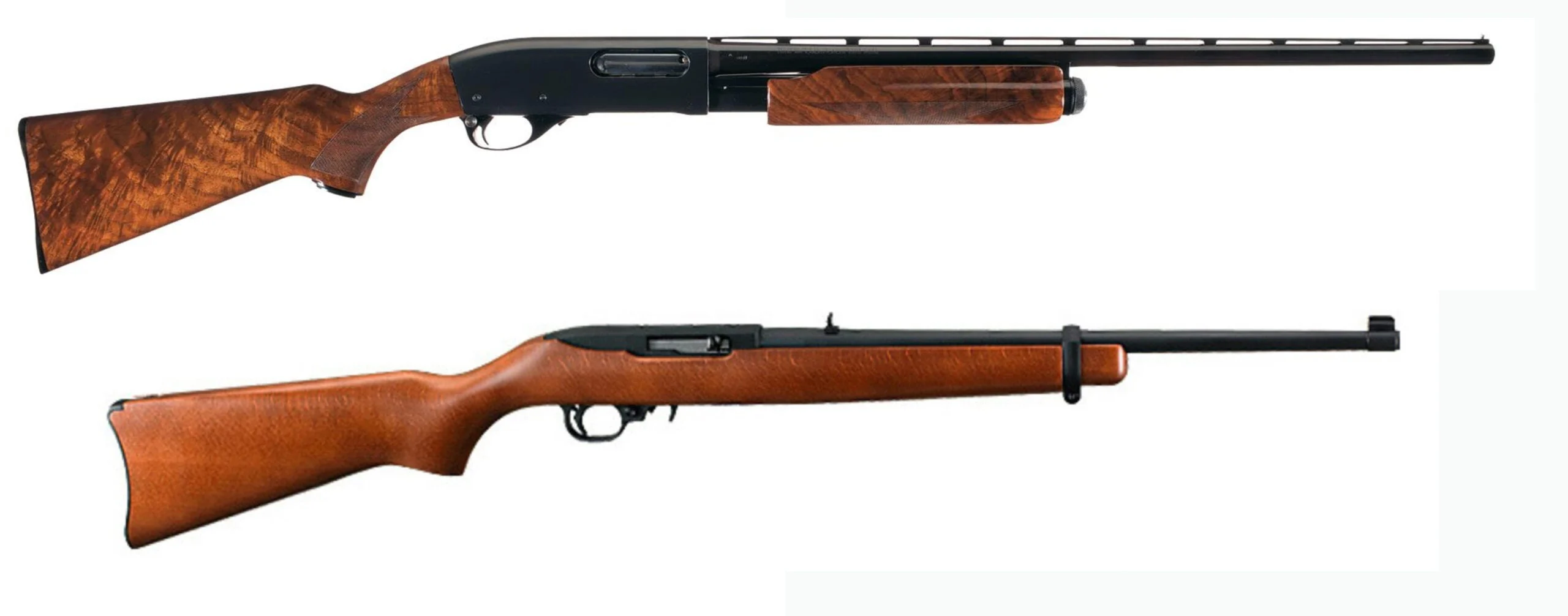
One of the things I love most about rabbit hunting is that the guns involved are so cool. Or at least they can be. Learning how to hunt rabbits doesn’t really require anything in particular in terms of a shotgun, which means you can use just about any model you like. If you’re new to it, just take whatever shotgun you have or can borrow. If you’re a bit of a shotgun nut, on the other hand, it’s the perfect excuse to bust out an old classic pump or auto or beater side-by-side that has sentimental value. My current favorite bunny guns (this could change) are an Ithaca Model 37 Featherlight 16-gauge, and Remington 1100 Special Field 20, and an SKB Model 100 20-gauge side-by-side. I have a buddy who uses a 20-gauge H&R Topper single-shot, just for nostalgia’s sake. Same goes for .22s. A Ruger 10/22 is about perfect for rabbit hunting, but it’s also really fun the bust out that old Marlin 39A or Winchester 9422 lever-action or an ancient Remington Model 12 pump or classic Nylon 66.
You don’t need anything fancy in terms of ammo either. Twelve or 20-gauge game loads of 6 or 7 1/2 shot are standard fare. For more experienced hunters, a 28-gauge or .410 provide a little extra challenge. For .22 LR ammo, any quality 40-grain hollow-point or round-nose hunting load will do the job just fine.
Read Next: The 10 Best Shotguns for Hunting Rabbits
4 Great Reasons to Start Rabbit Hunting
If you’re still not ready to go bust some bunny brush, let me try to convince you—because I had to be convinced a little. When I was in high school, there was a snowshoe hare or a cottontail rabbit beneath every third bush. My brothers and I shot and ate so many that I eventually swore off shooting or eating another. Bunnies would spring from hedgerows and bounce from cedar bushes around me, and I would just keep walking, looking for a grouse to shoot.
Decades later, a friend on our deer lease invited me to hunt cottontails with him after the deer season was over. I told him no thanks at first, but he kept after me. Eventually, I thought What the heck? and went—and was pretty much blown away by that hunt. I’d forgotten how much fun rabbit hunting can be and how much there is to love about it. So, let me count the ways—and the reasons you should go.
1. Rabbit Hunting Is Fun
Some types of hunting require endurance or hard work but the reward makes it all worth it. Other types of hunting are just pure fun, from start to finish. Rabbit hunting is the later. You go for a nice walk with a buddy or two, you bounce bunnies along the way, and you get lots of shooting in the bargain. To me, this is reason No. 1 to learn how to hunt rabbits.
2. Rabbit Hunting Is Easy
Bunny hunting can get complicated if you decide to train and run dogs, but for most hunters it’s as simple as putting on an orange vest, grabbing whatever shotgun is handy, and walking along some hedgerows or through some thickets, stomping here and there. It doesn’t require any special skills or specialized gear, and just about anyone can do it.
3. Rabbit Hunting is Perfect for Beginners
Because is so easy, and because the gear requirements are so few, and because it can provide lots of action with solid odds of success, rabbit hunting is perfect for beginner hunters. And that just adds to the fun. Helping a kid or new hunter get their first rabbit is even better than getting one yourself.
4. Rabbits Are Delicious to Eat
A fresh cottontail rabbit, cooked right, is as good to eat as any wild game and better than most anything. If you want to argue that squirrel or wild turkey or venison backstrap is better, I suppose that’s reasonable, but there’s a decent chance you’ll lose the argument.
Rabbits and Hares: The Most Commonly Hunted Species
If you're going to hunt rabbits and hares, you'll need to know which ones are out there to be hunted. So, here's a quick rundown.
Cottontail Rabbits

There are 27 species on cottontail rabbits in the Americas, 9 of which live all throughout the Unites States. As a result, the vast majority of hunters in this country can find a cottontail of one variety or another within driving distance of home, whether it’s the Eastern, Appalachian, or New England cottontail of the East, the swamp rabbit of the South, or the mountain or desert cottontail of the West, among others.
Snowshoe Hares

In the continental United States, snowshoe hares can be found in parts of the Northeast and New England, down into Appalachia; parts of the Upper Midwest; and in mountainous regions of the Northwest. North of that, they are found in Alaska and every Canadian province. Snowshoes are also known as varying hares because their coat changes from brown to white in the winter. Snowshoe populations are cyclical, with peaks averaging every 10 years or so.
Jackrabbits
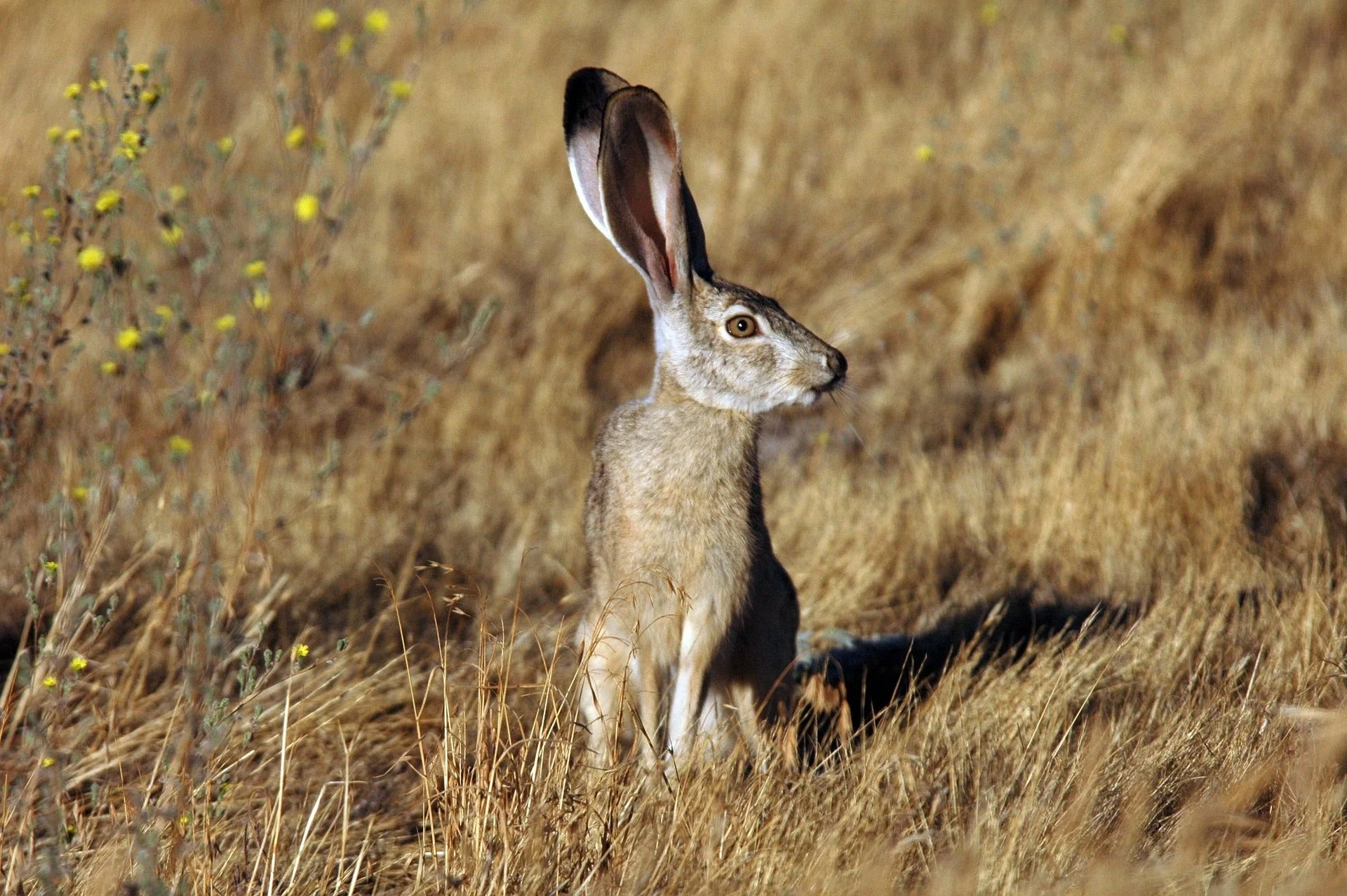
Jackrabbits roam throughout the western half of the U.S., from the plains states to the Pacific Northwest and Southern California. White-tailed jackrabbits dominate the northern half of that range, black-tailed jackrabbits the southern half, with some overlap. Jackrabbits are big, with some stretching more than 2 feet long and weighing up to 10 pounds. And if that weren’t enough to give them away, their extra-long ears will.
How to Stay Safe While Rabbit Hunting
Bunny hunting is more effective and fun with a buddy or two. But whenever you have multiple hunters working together in tight spaces, you need to be extra careful. Here are three good things to remember.
Be seen. Everyone in the group should wear both a hunter-orange vest and hat. You want to be able to see each other even in the thickest cover.
Be heard. Whenever cover or terrain prevents you from seeing one another, keep in constant contact by whistling or talking back and forth. When you jump a rabbit, give a yell. It tells your buddies to get ready to shoot, and it lets them know exactly where you are.
Be smart. Any time you make a plan to hunt a new section of woods or patch of cover make sure you discuss and nail down safe shooting lanes. Saying it aloud will help cement it in everyone’s head. Now go kick up some bunnies.
FAQs
Q: What is the best time of day to hunt rabbits?
Rabbits are most active in the early morning and late afternoon. But you can still jump rabbits from cover throughout the day.
Q: Where can I find rabbits in the woods?
Look for brushy cover, swamps, recent burns, power-line cuts, or recently logged areas. Rabbits need brush and piles of sticks to hide under, and they feed on roots and bark during the winter. You can also wait for fresh snow and look for rabbit tracks in the woods.
Q: Where should you not hunt rabbits?
Stay away from old-growth forests or areas without any brush and cover. Rabbits need places to hide from predators like coyotes and birds of prey. Wide-open ground without things like brush piles is inhospitable to rabbits.

